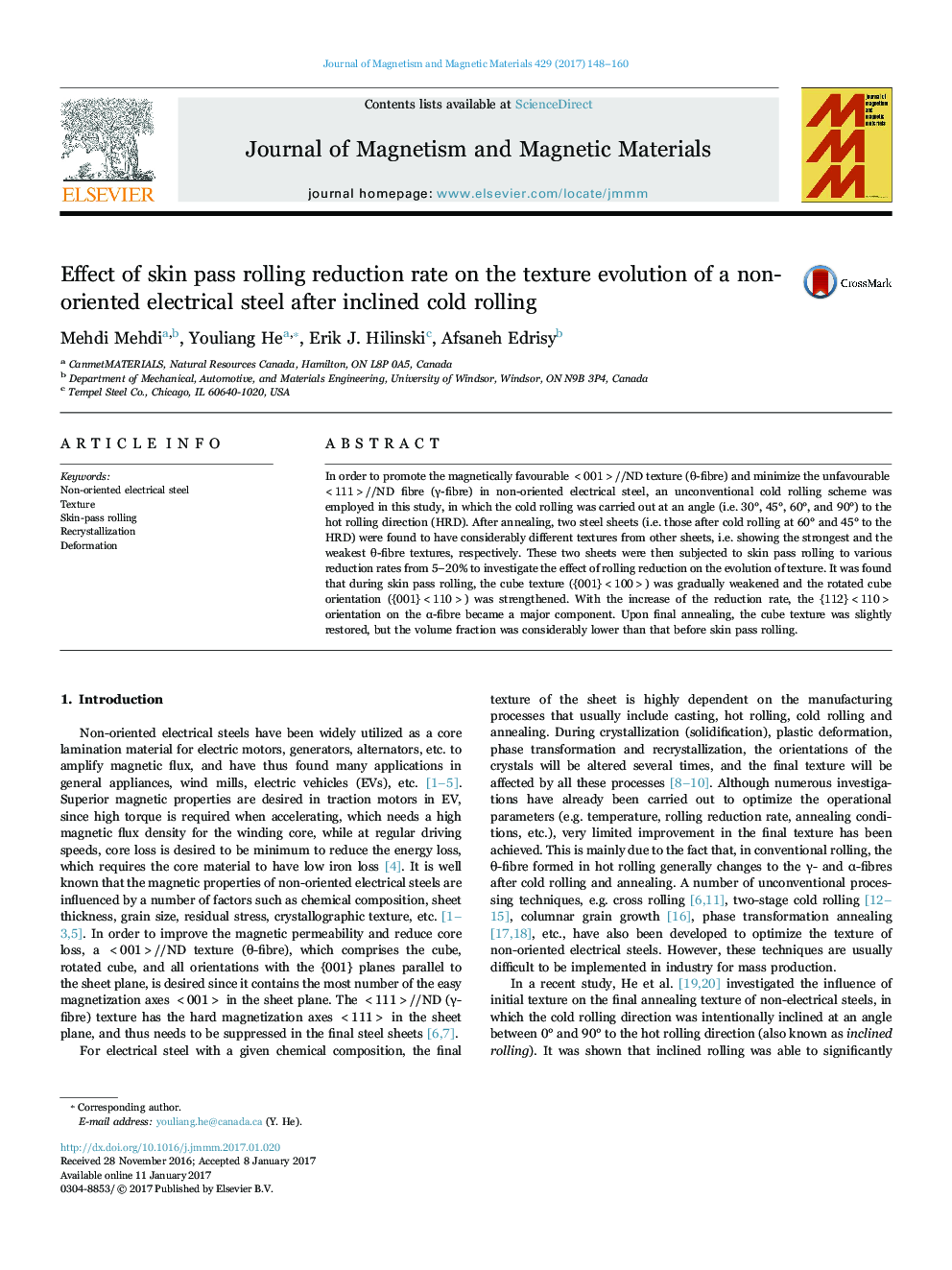| Article ID | Journal | Published Year | Pages | File Type |
|---|---|---|---|---|
| 5491106 | Journal of Magnetism and Magnetic Materials | 2017 | 13 Pages |
Abstract
In order to promote the magnetically favourable <001>//ND texture (θ-fibre) and minimize the unfavourable <111>//ND fibre (γ-fibre) in non-oriented electrical steel, an unconventional cold rolling scheme was employed in this study, in which the cold rolling was carried out at an angle (i.e. 30°, 45°, 60°, and 90°) to the hot rolling direction (HRD). After annealing, two steel sheets (i.e. those after cold rolling at 60° and 45° to the HRD) were found to have considerably different textures from other sheets, i.e. showing the strongest and the weakest θ-fibre textures, respectively. These two sheets were then subjected to skin pass rolling to various reduction rates from 5-20% to investigate the effect of rolling reduction on the evolution of texture. It was found that during skin pass rolling, the cube texture ({001}<100>) was gradually weakened and the rotated cube orientation ({001}<110>) was strengthened. With the increase of the reduction rate, the {112}<110> orientation on the α-fibre became a major component. Upon final annealing, the cube texture was slightly restored, but the volume fraction was considerably lower than that before skin pass rolling.
Related Topics
Physical Sciences and Engineering
Physics and Astronomy
Condensed Matter Physics
Authors
Mehdi Mehdi, Youliang He, Erik J. Hilinski, Afsaneh Edrisy,
